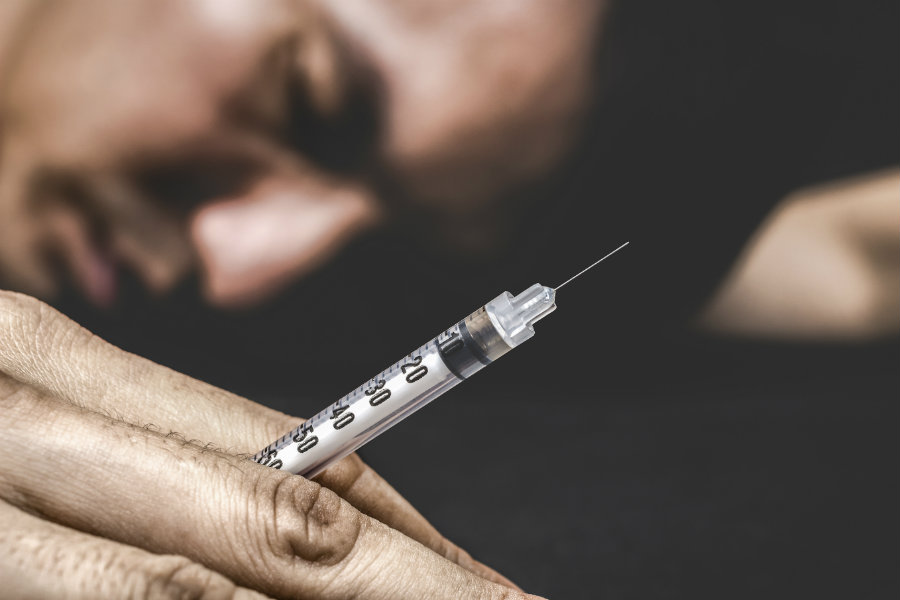Carfentanil, a drug that’s 100 times stronger than fentanyl, the drug that killed Prince, is making its way to the streets of the Midwest, forcing a state of emergency upon the state of Ohio.
Opioid strength is usually measured against morphine. Fentanyl is 50 to 1,000 times stronger than morphine, which makes carfentanil optimistically 5,000 times stronger than morphine. Carfentanil is now being mixed with heroin, which has led to a spike in overdoses.

Authorities state that usually, 4 or 5 overdoses a day is what they would expect with only heroin and other common opioids hitting the streets. That amount has increased tenfold in Southwest Ohio.
Elephant tranquilizer is not for humans
Carfentanil is so potent that first responders and emergency personnel are advised to wear gloves and protective clothing, as inhaling or touching a minimal amount can cause an effect on the human body.
Because the body takes so much to process carfentanil and is so quickly exposed to its effects, the high obtained from carfentanil is much longer and intense and most of the time the body cannot contain it, leading to an overdose.
Usually, opioid overdoses are treated with naloxone, which is also often provided to opioid addicts trying to recover and to fend off withdrawal symptoms. But carfentanil overdoses are much more severe, which significantly reduces the chances of saving an overdosing patient’s life. It has been reported that emergency staff had to employ at least three times the regular dosage of naloxone to reverse carfentanil overdoses.
An elephant tranquilizer, carfentanil has a restricted distribution among veterinarians. It is a potent opioid used only for sedating large animals with resistant circulatory systems.
Ease of distribution is the main issue
According to the DEA, most carfentanil available on U.S. streets originates from China. People can create an anonymous account on the Internet and buy the drug with relative ease, stated DEA spokesman Russ Baer. He warns that people can quickly obtain synthetic opioids that are much stronger than opium derivates, which originate from poppy plants.
One of the main issues with opioid distribution is the lack of sizeable penalties. Because selling opioids on the street are considered a crime less punishable than murder or anything involving violence, the legal implications are much softer. But the circumstances should change if the trafficked drug is carfentanil, which has a very high mortality as it is not supposed to be consumed by humans in the first place.
The known uses of carfentanil
Carfentanil is sold under the name Wildnil. The DEA classifies it as analogous to fentanyl. It is often administered in 1ml or lesser doses, most of the times through intramuscular administration with a dart. As the animal is treated with carfentanil, it can be operated upon, although veterinarians recommend constant monitoring. In the U.S., carfentanil is mostly used to tranquilize moose and deer, applying a dose on their back, neck or shoulders. Carfentanil’s indications suggest that it should not be used in animals that have cardiovascular or respiratory diseases, which in humans, is often a contributing factor to death by carfentanil overdoses.
Veterinarian recommendations also point out that carfentanil should only be used with naloxone at hand, as it is the most widely-accepted reversal agent. 100Mg of naloxone have to be applied for each milligram of carfentanil. To legally obtain carfentanil, the purchaser must have the DEA’s approval.

One of the most widely-known uses of carfentanil was during a 2002 hostage crisis in Moscow. 50 armed terrorists attacked the Dubrovka Theater, taking 850 prisoners. The theater’s inner architecture was such that regular military actions could not provide an appropriate window for taking out the gunmen. Russian forces had to enter the ventilation system and deploy a chemical agent to neutralize the terrorists.
The Russian military used an aerosol containing carfentanil to knock out the Chechen terrorists. The aerosol’s contents were not disclosed until a 2012 research confirmed its composition thanks to the analysis of the urine of two of the operation’s survivors.
The effects of the aerosol appeared to be too severe, and when emergency personnel made it to the scene, they were not carrying the correct reversal agent, in this case, naloxone. The episode resulted in 165 deaths, including hostages and all the Chechen terrorists, mainly attributed to respiratory failure caused by carfentanil overdosing.
According to the DEA, at least 12 substances analogous to fentanyl are produced or distributed on the U.S.’s drug traffic. Most of these opioids can be smoked or snorted, but the primary method of consumption is intravenous administration.
Unlike other synthetic opioids which can be acquired through a doctor’s prescription, carfentanil displays an entirely different type of drug, as it is never administered to humans with a medical purpose. Even if the DEA regulates its distribution and consumption, it has not stopped U.S’s drug traffickers from mixing carfentanil and heroin to cut the product and offer a more powerful high. Unwarily, people buy the mix and overdose, which usually leads them to their death.
Even if prescription drugs are strictly regulated, addicts will always find a way to get their dosage until penalties become much higher and the availability of illicit opioids, at least those such as carfentanil that cannot be legally obtained, is reduced to zero.
Source: NPR
